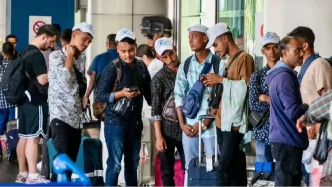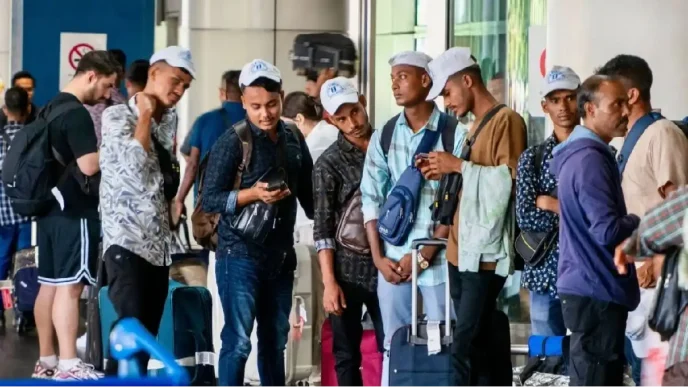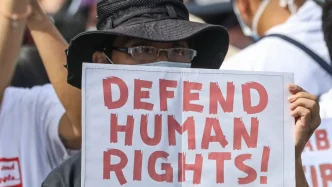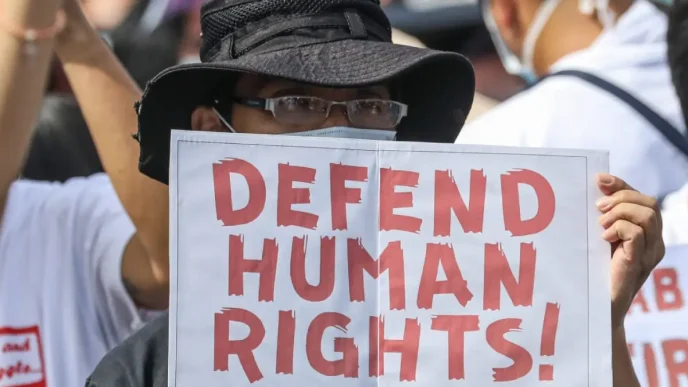In a remarkable display of regional solidarity, the Armed Forces of Bangladesh have concluded a significant humanitarian mission in Myanmar, providing critical medical care, search and rescue operations, and emergency relief supplies following a devastating earthquake on March 28, 2025. The operation, centered in Naypyidaw, not only addressed immediate needs but also underscored Bangladesh’s growing role as a key player in South East Asian disaster response, further cementing bilateral ties with its neighbor.
A Comprehensive Response to Crisis
The mission, launched under the directive of Bangladesh’s chief adviser, was a direct response to the powerful earthquake that struck Myanmar and parts of Thailand, leaving widespread destruction in its wake. According to a press release from the Inter-Services Public Relations (ISPR) on April 17, 2025, a Bangladeshi medical team treated 885 patients, including performing 17 complex surgeries, at several facilities in Naypyidaw. These included the Zabuthiri 50-bed hospital, a 100-bed hospital, and a 1,000-bed General Hospital.
Beyond medical aid, the operation encompassed search and rescue efforts and the delivery of 151.5 metric tonnes of humanitarian supplies—one of the largest contributions to Myanmar from any nation in the aftermath of the disaster. The Bangladeshi teams operated in three coordinated phases, ensuring a structured and impactful intervention. Among their notable achievements was the recovery of a 68-year-old woman’s body from the rubble of a collapsed four-storey building on April 3, despite the structure’s precarious condition.
The scope of the mission extended to structural assessments and recovery operations. Bangladeshi teams evaluated 45 damaged buildings, including residential complexes, clinics, and shopping malls, for safety and risk mitigation. They also retrieved valuable materials from three partially damaged buildings of Myanmar’s Ministry of Foreign Affairs, a task entrusted to them by local authorities. In collaboration with Myanmar officials, they devised a comprehensive rescue plan for the Central Fire Service Station, later executed by local forces.
Recognition and Regional Cooperation
The efforts of the Bangladeshi contingent were met with high praise from both domestic and Myanmar authorities. On April 17, a special reception at the Army Multipurpose Complex in Dhaka Cantonment honored the returning teams. Lt Gen S M Kamrul Hassan, Principal Staff Officer of the Armed Forces Division, presented commemorative crests to members of the rescue and medical units. Earlier, Brig Gen Md Alimul Amin, director general of operations and plans, briefed the media on the mission’s execution and impact.
In Myanmar, the appreciation was equally profound. Deputy Prime Minister and Foreign Minister U Than Shwe personally visited the Bangladeshi team, hosting a luncheon in their honor. High-level coordination meetings with senior officials and public representatives ensured ongoing support was streamlined. A formal farewell ceremony on April 10, attended by Vice Chairman of the State Council Vice Senior General Soe Win and several Union Ministers, marked the mission’s conclusion. The Bangladeshi teams returned home aboard a Bangladesh Navy vessel on April 15.
The ISPR release highlighted the mission’s broader significance, stating, “The humanitarian assistance mission demonstrates Bangladesh’s compassion for its neighbors and reflects the nation’s enduring values. This mission has further strengthened bilateral ties and showcased the Armed Forces’ unwavering readiness to serve at home and abroad under the Government’s directive.”
Strengthening Bilateral Ties
The operation comes at a time when South East Asia faces increasing challenges from natural disasters, compounded by complex political and social dynamics. Myanmar, grappling with internal conflicts and governance issues alongside the earthquake’s aftermath, has often relied on international support to address humanitarian crises. Bangladesh’s intervention, executed with precision and empathy, marks a pivotal moment in the relationship between the two nations.
Historically, Bangladesh and Myanmar have navigated a complex relationship, particularly concerning the Rohingya refugee crisis, which has seen over a million displaced individuals cross into Bangladesh since 2017. While tensions have persisted over repatriation and border issues, this humanitarian mission signals a willingness to prioritize cooperation during crises. Analysts suggest that such initiatives could pave the way for deeper dialogue on other pressing matters, provided both sides maintain this momentum of goodwill.
The mission also highlights Bangladesh’s evolving role in regional disaster response. Over the past decade, the country has bolstered its military and civilian capabilities to assist neighbors during emergencies, drawing on its own experiences with cyclones, flooding, and other natural calamities. This expertise, combined with a commitment to international solidarity, positions Bangladesh as a potential leader in regional humanitarian efforts—an image the government appears keen to cultivate.
Challenges and Future Implications
Despite the mission’s success, challenges remain in ensuring sustained support for Myanmar’s recovery. The earthquake’s impact extends beyond Naypyidaw, with rural areas and conflict zones likely facing ongoing shortages of aid and infrastructure. Bangladeshi officials have acknowledged the support of multiple domestic ministries and the Bangladesh Embassy in Myanmar, as well as partner organizations, in executing this mission. However, long-term recovery will require broader international coordination, particularly given Myanmar’s political instability, which may hinder aid distribution if not addressed.
Moreover, the mission raises questions about resource allocation for Bangladesh itself. While the operation has been lauded, some domestic observers note that the country faces its own vulnerabilities to climate-related disasters. Balancing international commitments with national needs will be crucial as Bangladesh continues to assert its regional presence. If managed effectively, such missions could enhance the country’s diplomatic leverage, potentially influencing future negotiations on trade, security, and refugee issues with Myanmar and other neighbors.
Public sentiment in Bangladesh, as reflected in local media and social platforms, has largely been positive, with many viewing the mission as a point of national pride. In Myanmar, the gesture has been reciprocated with gratitude, though some local voices—particularly in conflict-affected regions—call for more sustained aid beyond immediate relief. These reactions underscore the delicate balance of humanitarian diplomacy, where actions must align with both immediate needs and long-term trust-building.
A Model for Regional Solidarity
The Bangladesh Armed Forces’ mission in Myanmar serves as a compelling example of how humanitarian aid can transcend political boundaries, fostering cooperation even amidst historical tensions. By deploying medical teams, rescue units, and substantial relief supplies, Bangladesh has not only addressed a pressing crisis but also laid groundwork for stronger regional ties. The operation’s success, marked by high-level recognition from both nations, suggests a potential model for future collaborations in South East Asia, a region often tested by natural and man-made challenges.
As Myanmar continues its recovery and Bangladesh reflects on its role as a regional partner, the mission’s legacy may well extend beyond the 885 patients treated or the 151.5 tonnes of aid delivered. It poses a broader question for policymakers and citizens alike: can acts of compassion during crises become the foundation for lasting peace and cooperation in a historically fractious region? For now, the return of the Bangladeshi teams to Dhaka symbolizes not just a mission completed, but a bridge built—one that could shape South East Asian relations for years to come.














